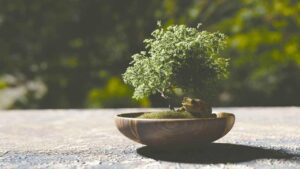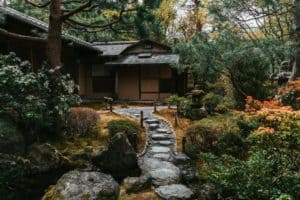How would you feel if you see your beloved fiddle-leaf fig plant gets sick? If the leaves droop and sometimes drop from the plant – assume that the plant isn’t happy. What is even worse are those brown spots on the leaves that lead the plants to death.
These are frustrating enough to break the heart of a fiddle-leaf fig lover. If you’re at the same stage or never want to face such a situation, I’m here to help you. There is nothing better than using the right type of soil and fertilizer to prevent these issues of the plant and help it to thrive.
There are plenty of soil mixtures and fertilizers in the market manufactured by various companies. How can you pick the best one among them? That’s a bit tricky. So, I’ve searched on the internet and discovered the best soil and fertilizer for fiddle leaf figs that’d be also the perfect fit for any potted plant. I’ll only recommend two products from the hundreds of others on the market. Many happy customers verified the quality and performance of those products. Let’s take a quick look at them.
I didn’t even imagine how much people love these plants. Fiddle-leaf fig lovers have a dense feeling in their deep hearts for these plants. Mandy Spears is one of them. She loves her plant just like a real soulmate, and sometimes she even jokes that she is in an abusive relationship with her plant.
“He is so handsome. His luscious and wrinkly green leaves often rampant the throbbing of my heart.” – Mandy expressed her emotion about her crush (?) in her romantic poem. Their love story was going until the story reached its climax. Mandy suddenly discovered that her soulmate got sick.
“Some of his leaves always turn brown and start falling off one by one.” – Mandy became very disappointed. Anxiety made her panic. “I don’t want to see him die. What should I do? Why can’t he save his leaves?”
That’s so painful.
Imagine yourself in her place, what’d you do then if your beloved one gets sick and slowly falls off to death? Who has such a cruel heart to endure the scene?
If you don’t want to face such a situation, then take proper care of your beloved plant. Give it necessary fertilizer and, especially, the best soil for fiddle-leaf fig plants you can find in the market. But that’s a bit tricky in this cluttered world of low-quality products. So, I’ve done the job for all of you. As a bonus, I’ll also discuss various health problems of fiddle-leaf fig plants and advice on how to cure them.
Now, let’s see what’s inside my recommended fiddle-leaf fig plant soil and fertilizer that’ll make your tree flourish and thrive throughout the year.
Best Soil for Indoor Fiddle Leaf Fig Plants
Fiddle-leaf figs are famous for their finicky nature. Even a minimal change of environment or watering schedule can make them sick. Why does this happen? In most cases, the problem hides in the soil that retains water. The plant would suffer if the soil becomes too dry or too wet.
The best type of soil for fiddle-leaf fig plants should have well water draining ability with excellent aeration. And this is one of the best soil mixes for fiddle-leaf fig plants, which is manufactured by Perfect Plants. This product meets all the characteristics that a perfect soil mixture should have, which makes it the go-to choice for any indoor plant.
Contains a Blend of Beneficial Natural Ingredients
It contains a blend of coconut coir, pine bark, perlite, and sand that increases the moisture-retaining ability of the soil. So, you won’t need to drown the plant base and worry about root rotting, which eventually brings brown spots on the leaves. How is this possible? Let’s break it down.
Sufficient Water Retention Ability
Coconut coir absorbs and retains water when it flows into the soil. After the soil squeezes all the water, these fibers will start releasing water so that the roots can drink. In this way, coir fibers save the roots from rotting caused by overwatering. As the fibers reserve water for future usage, you won’t need to worry about the risks of underwatering.
Better Aeration
Perlite and broken bits of pine bark provide better aeration into the soil by lightening it and helping to drain the extra water. So, the roots can get more oxygen.
Pros
- Not only for fiddle-leaf fig, but you can also use this soil mixture for many other potted plants.
- Better water draining characteristics of the soil will release you from overwatering problems.
- Moderate water supply from the coconut coir and better aeration characteristics of the soil will help your potted plants to thrive.
Cons
- Two buyers on Amazon claimed that they found gnats on the soil. I think they had a bad lack as the rest 79% of the customers gave it a 5-star review.
- Copper will become discolored naturally, but the performance won’t be affected by this. But you can easily restore the original color by applying a copper cleaning solution.
Conclusion
This soil mixtures specialty is the ability to retain water for a long time. So, you won’t need to worry about over or underwatering. Its unique features make it one of the best soil for fiddle-leaf fig out there on Amazon I’ve found so far.
The Best Fertilizer for Fiddle Leaf Fig Plants
Potted plants can’t get the necessary nutrients all the time. So they need special caring and additional fertilizers. Lack of nutrients can even lead the plants’ health in a worse situation. That’s why you should pick the best fiddle-leaf fig fertilizer to make your plant happy.
How can you identify the right fiddle-leaf plant food?
Various plant fertilizers have different NPK ratios. NPK ratio means the percentage of nitrogen, phosphorus, and potassium in the compost. For a fiddle-leaf fig plant, the ideal NPK ratio is 3-1-2. The best fiddle-leaf fig fertilizer I’ve found on Amazon is the “EarthPods Ficus + FFL tree fertilizer.” Plenty of happy customers have shared their satisfying experiences after using this fertilizer.
Plenty of Beneficial Nutrients
This compost will deliver an optimum balance of nutrients to your plant because it contains a mix of nutrients, humid and fulvic acids, over 70 trace elements, helpful fungi, and bacteria. These ingredients will help your fiddle-leaf fig plant to produce larger and healthy leaves, strengthen its trunk.
Pretty Simple to Use
The EarthPod’s fertilizer comes in capsules, which makes it easy to use. You use these in many ways. You can push the capsules into the soil or scatter the ingredients around the roots after opening the capsule. If the plant is small, give it 1-2 capsules. Medium to larger plants may require 2-8 capsules depending on their size.
Pros
- This product is a bestseller on Amazon. From the customers’ reviews, you’ll understand how amazing it performs for any plant.
Cons
- I didn’t find any noticeable lacking in it.
FAQ
- Can I use this fertilizer for my bamboo plant?
Yes, it’d be great for bamboo.
- Does it include urea?
No.
Conclusion
Finding out the real gems on Amazon is a bit hard. This product is one of those rare arises. Customers had a marvelous experience after buying and using it for various plants. Take a look at their reviews on Amazon, and you might also become surprised to see what these tiny capsules can do for a tree.
The Complete Guide for Caring and Growing a Healthy Fiddle Leaf Fig
These plants are famous for their finicky nature and could get sick for even a small change of environment. So now, take a look at some key aspects of its caring.
Preferable Sunlight Condition
- Fiddle-leaf figs need a lot of bright but indirect sunlight. So place it where the plant could get such amount of sunlight.
- Never leave the tree under direct sunlight. It’s very bad for these plants’ health.
Watering Schedule
Give water only when the topsoil will become dry. Be careful about overwatering.
Growth
These plants can grow up to 10 feet inside the house, and most of this growth happens during spring and summer. If you think the plant isn’t growing well, consider providing it with the best fiddle-leaf fig fertilizer.
Common Problems & Treatment
- Brown spots on leaves
Cause: If the spots start appearing at the center of the leaf, then the reason is overwatering. Because of underwatering, the spots develop at the edge.
Treatment: For overwatering problems, stop watering. Then let the soil fully dry. Check the drainage holes if they’re blocked. Wait for a few days and observe the leaves, whether they start healing or not.
Sometimes overwatering rots the roots. If the leaves can’t recover after a few days, then remove the soil and check if there are any rotten roots. If you found some, cut them out and then plant the tree with new soil.
If the plant gets affected by underwatering, give it a full shower. And, water it regularly.
- Leaf fall
Cause: Leaf dropping happens for over or underwatering on fiddle-leaf figs. Overwatered plants usually drop only their bottom leaves. And, leaves drop from anywhere on the tree for underwatering.
Treatment: Follow my instructions given above for both over and under watered fiddle-leaf fig plants.
- Leaf Sagging
Cause: It appears when the plant becomes warm and thirsty.
How to refresh the leaves?
Water the plant thoroughly. In the warm days of summer, your plant will probably need more frequent watering.
Conclusion
A fiddle-leaf fig plant can create an astonishing view inside of your house. Nowadays, many modern interior designers place this “Instagram famous plant” among other landscaping ornamentals to give a creative touch in their design ideas. Since it’s a native tree of lowland tropical rainforests, it needs special care when the plant is kept indoors.
If you don’t provide the plant with the necessary nutrition and proper watering, that could even lead to death. So, take your decision carefully and pick the best soil and fertilizer for your beloved fiddle-leaf fig plant.











